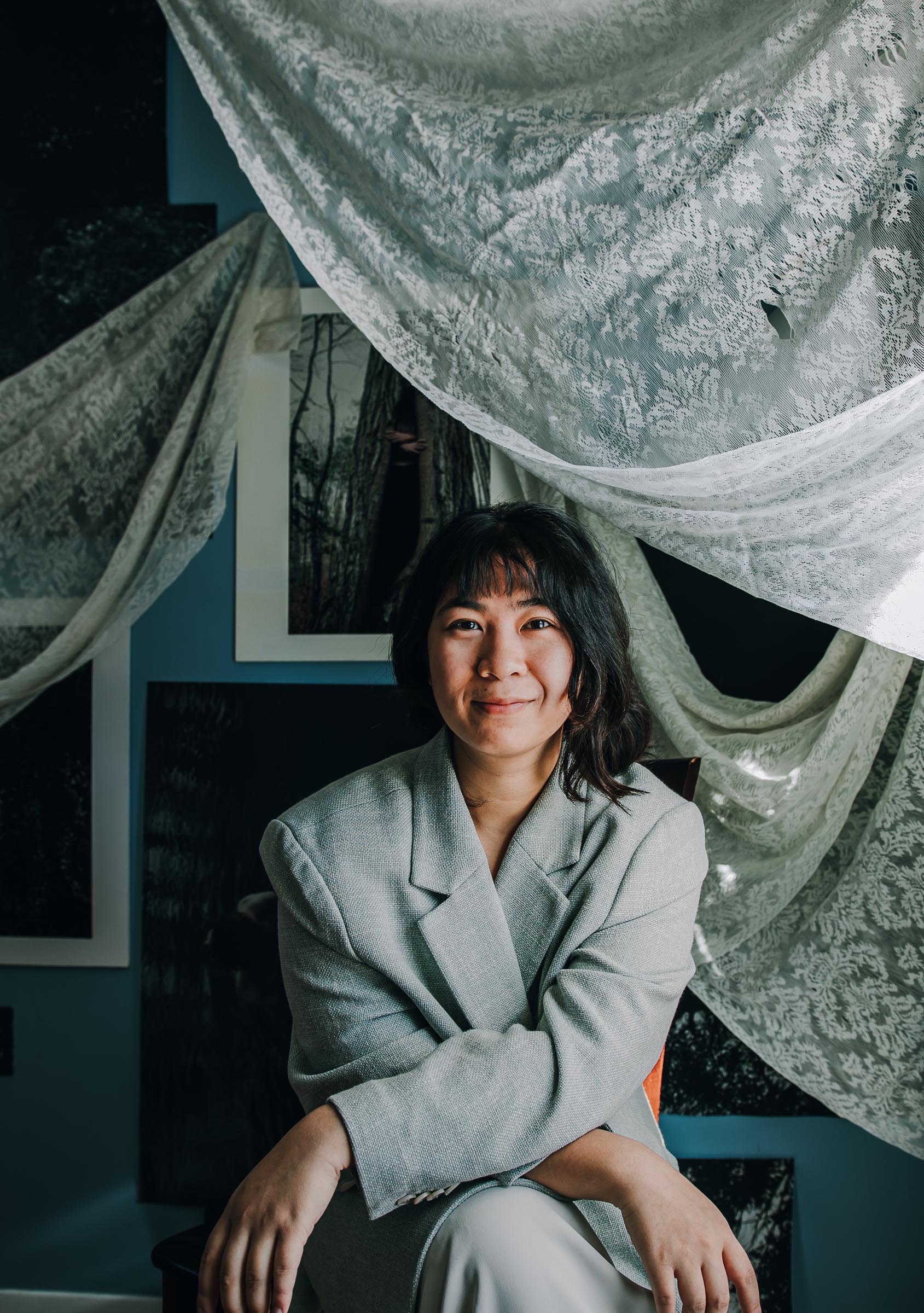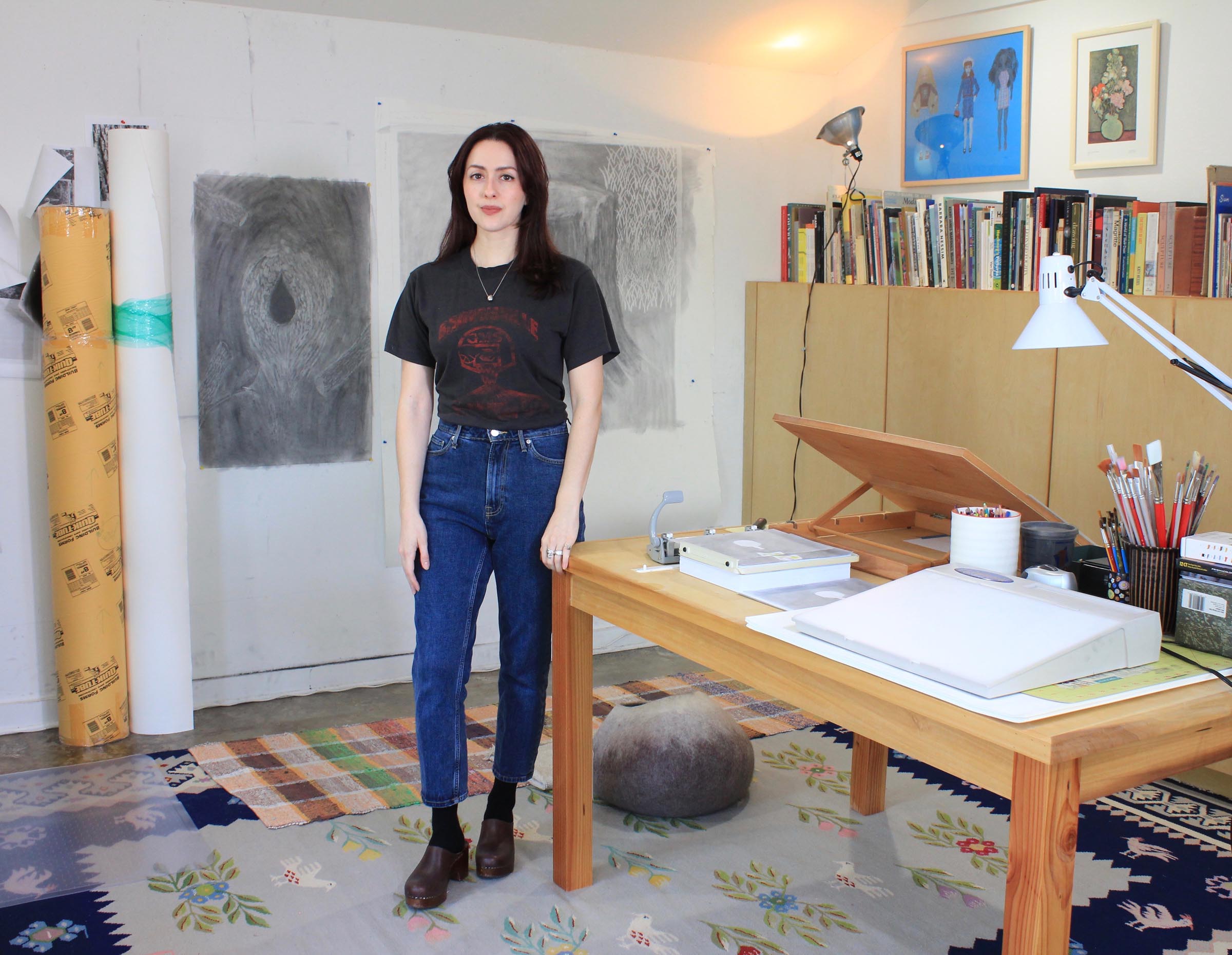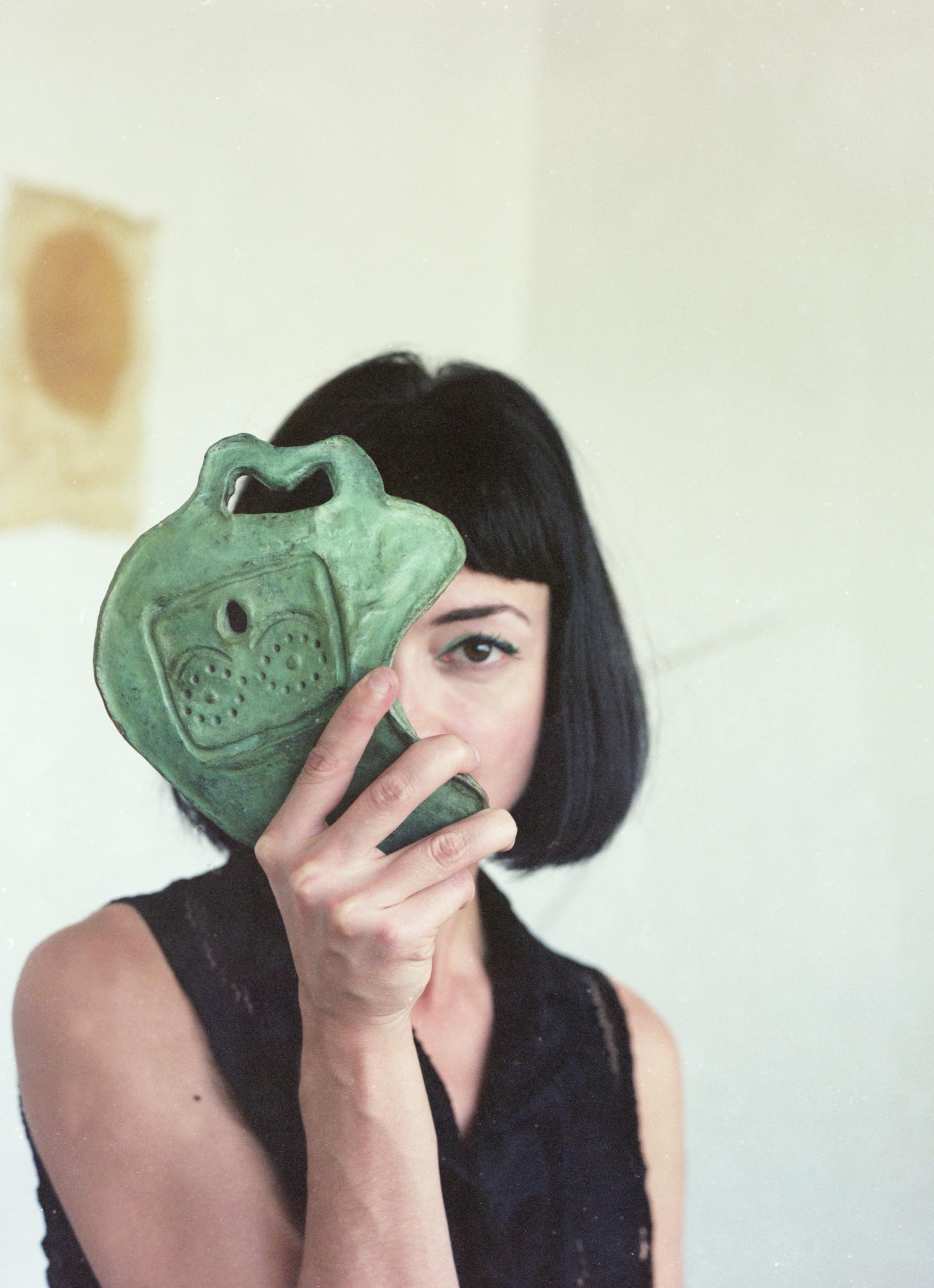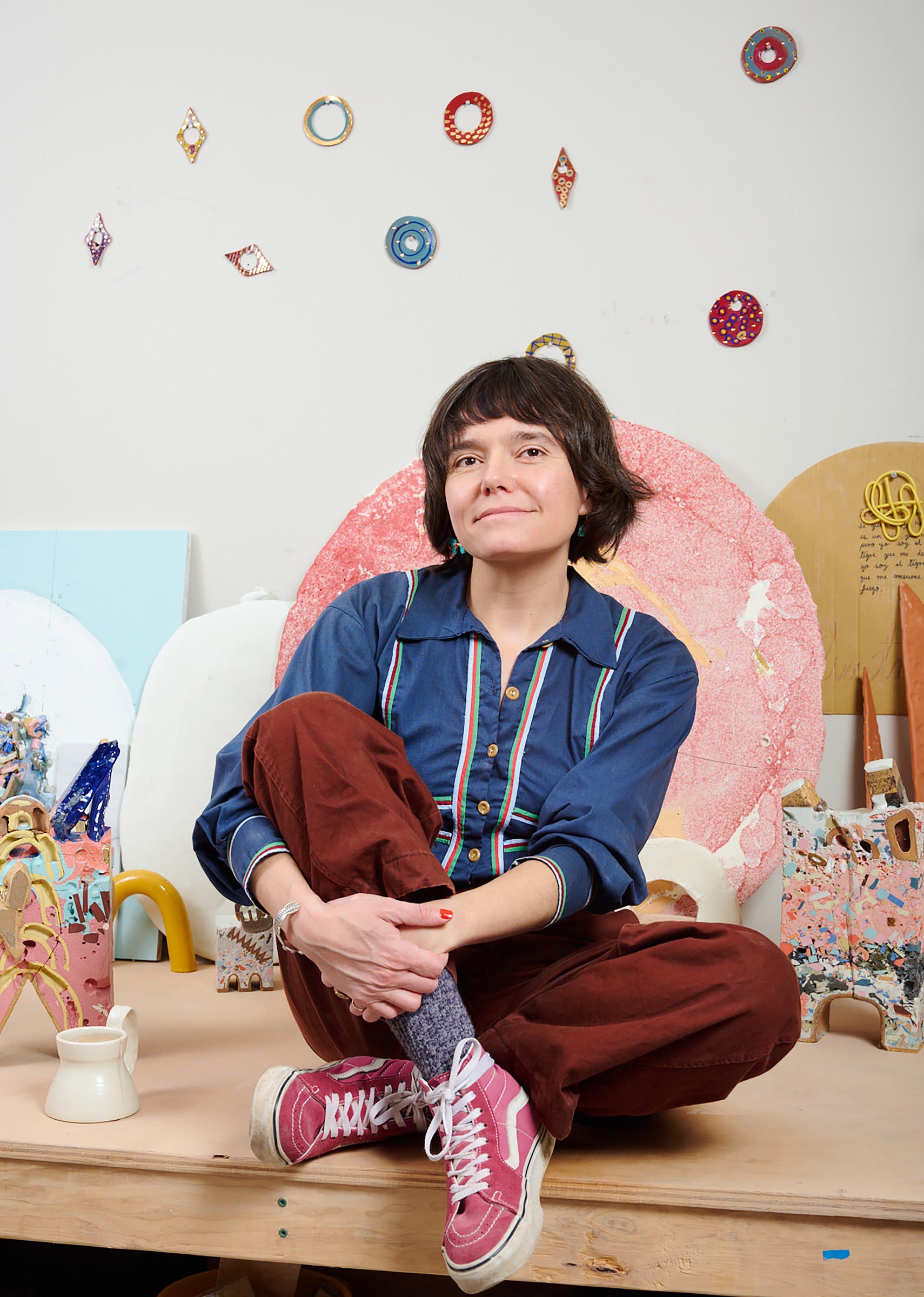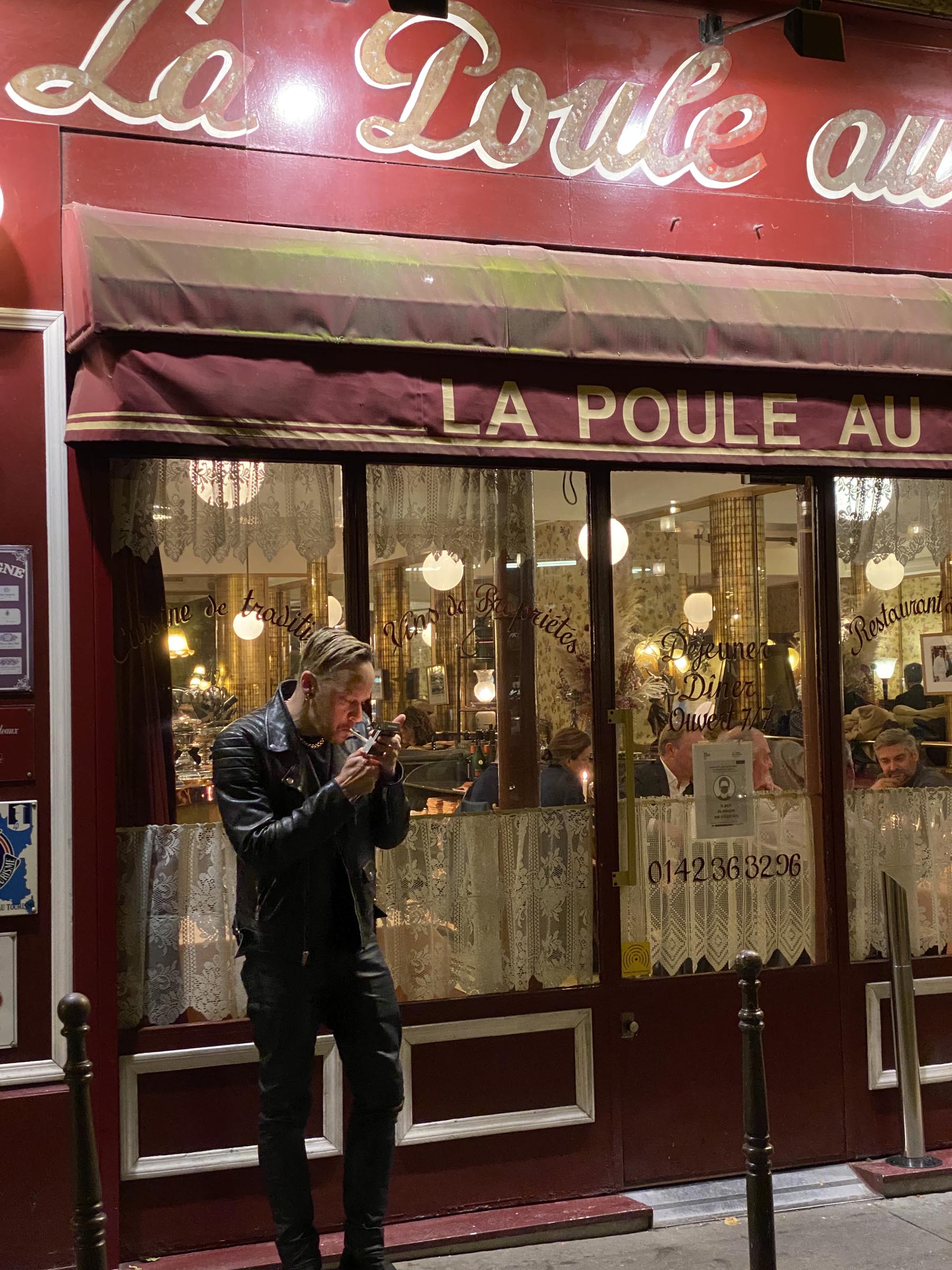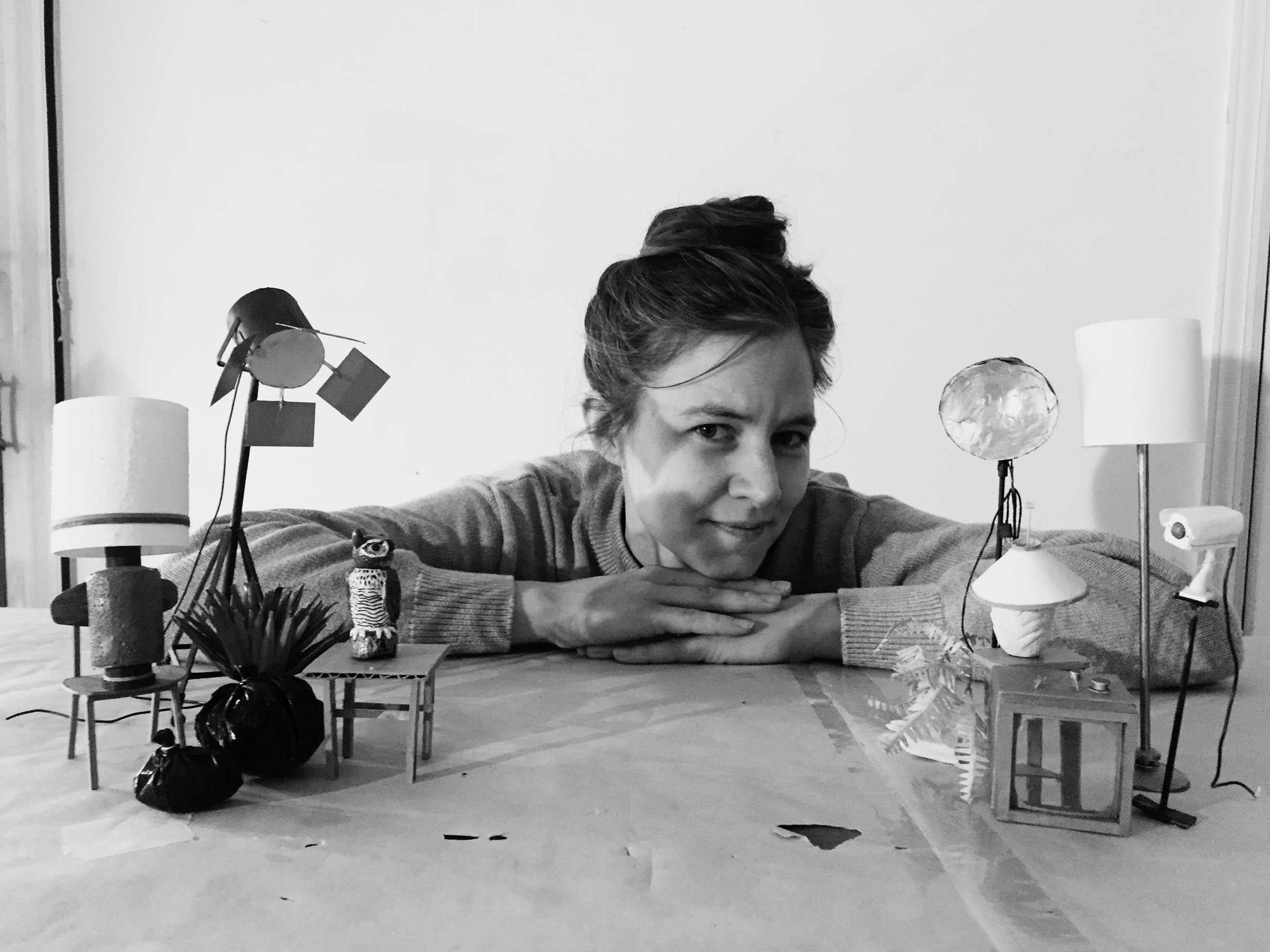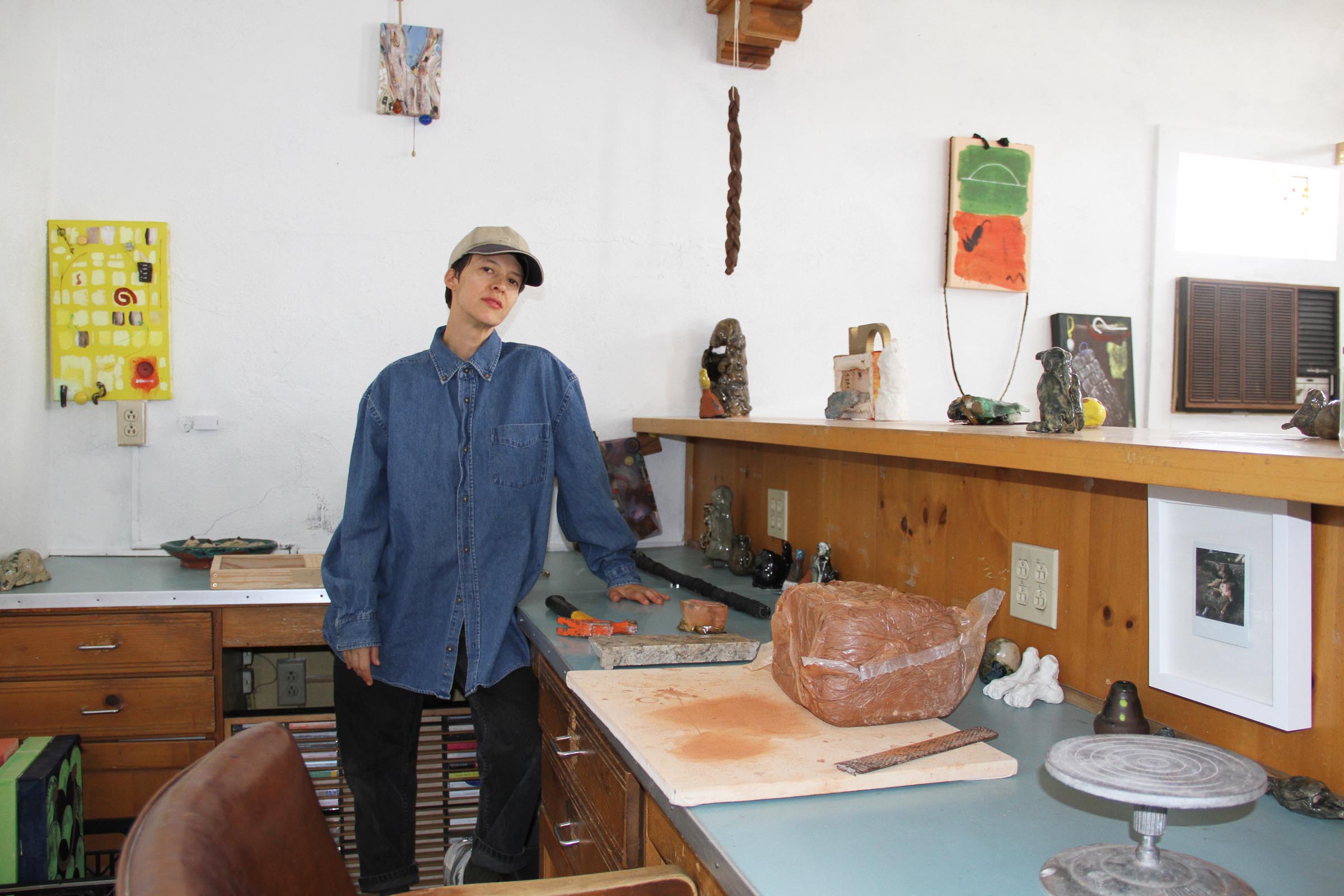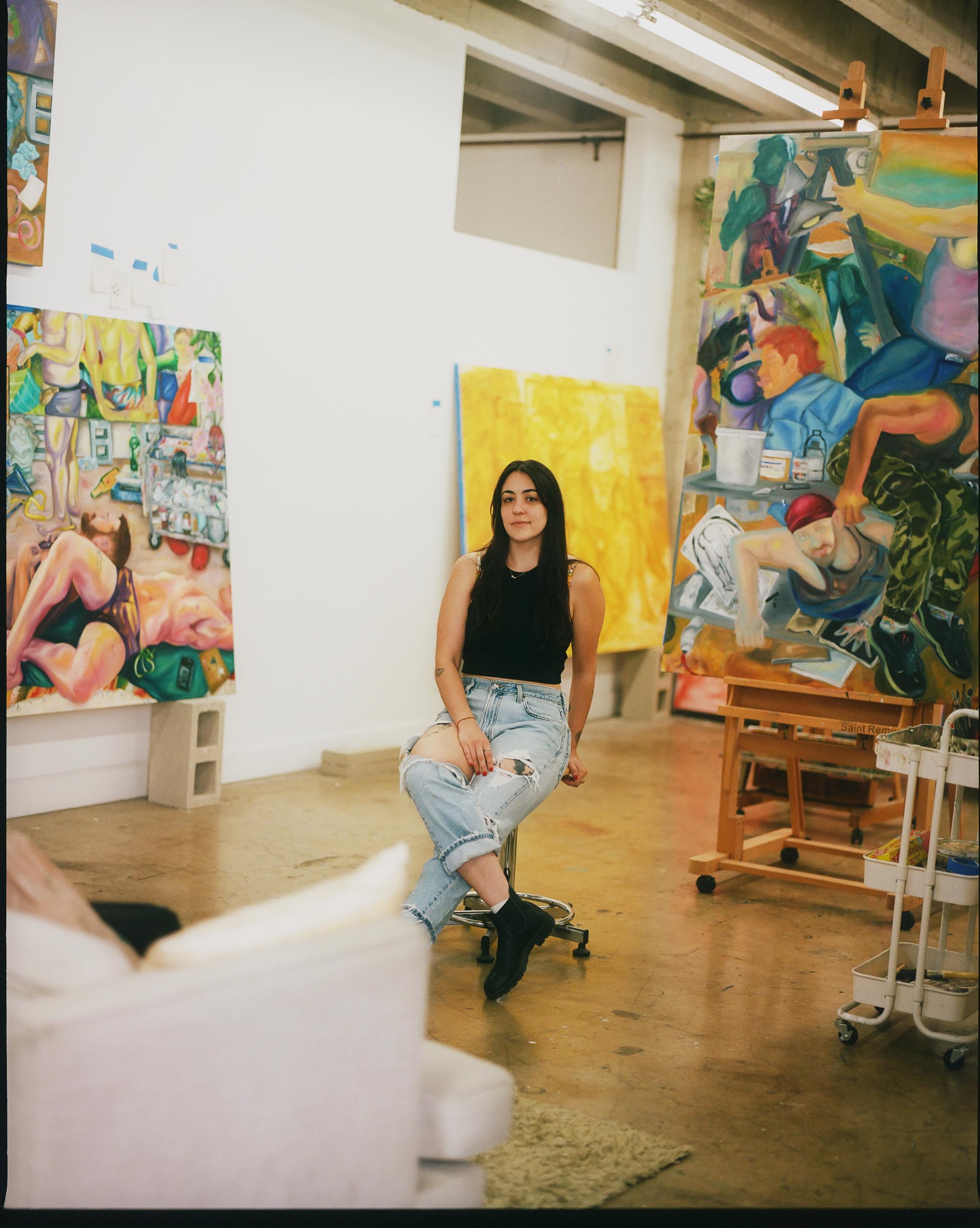
Courtesy of the Artist and OCHI. Photo by Deen Babakhyi
How did you get into making art?
My grandfather was a comic book artist for DC Comics. My first experiences with drawing the figure were with him — we used to sit together after dinner and he’d show me how to draw superheroes like Batman and Catwoman. Later on in high school I took painting classes with my friend’s mom in their garage. She taught me how to paint with oils and I fell in love with the medium.
I began pursuing painting more seriously after I visited Berlin, Germany for the first time when I was 21. Seeing the sharp, political paintings of artists like Max Beckmann and Hannah Hoch cracked open my understanding of what figurative painting could be. These initial experiences with German painting continue to influence my practice today.

Courtesy of the Artist and OCHI. Photo by Deen Babakhyi

Courtesy of the Artist and OCHI. Photo by Deen Babakhyi
What are you currently working on?
I just finished seven large paintings (between 48″x60″ and 55″x78″) for an upcoming solo show with Ochi Gallery in Los Angeles opening September 2023. The show is titled ‘Male Gays’. In this body of work I use my studio as a stage to explore the art historical and personal implications of my gaze as a queer woman painting gay men. I intentionally play with the objectifying ways men have historically looked at women, while centering the humor, intimacy and understanding I share with my subjects, who are also my friends.

Courtesy of the Artist and OCHI. Photo by Deen Babakhyi
In this body of work I use my studio as a stage to explore the art historical and personal implications of my gaze as a queer woman painting gay men.
Brea Weinreb

Courtesy of the Artist and OCHI. Photo by Deen Babakhyi
What inspired you to get started on this body of work?
When I moved to LA in March 2022, I met a group of gay men who offered to come to my studio and pose for me. While I initially envisioned situating them in grassy outdoor settings to resemble my previous work, seeing them interact with the objects and paintings in my studio wound up being more interesting to me. Using my studio as a setting also allowed me to incorporate more of myself into the paintings, which is something I’ve wanted to do for a while now.

Courtesy of the Artist and OCHI. Photo by Deen Babakhyi

Courtesy of the Artist and OCHI. Photo by Deen Babakhyi
Do you work on distinct projects or do you take a broader approach to your practice?
I like to work in series, focusing on a specific environment, group of people and set of ideas throughout a collection of paintings. The paintings always wind up evolving beyond what I initially intended, so I find starting with some parameters helps me set the scene and create an initial trail for viewers to latch on to.

Courtesy of the Artist and OCHI. Photo by Deen Babakhyi
What’s a typical day like in your studio?
I get to my studio around 10 am and spend the first hour or two looking at what I did the day before and thinking through what I want to do next. During this time I might also read, write, sketch, or clean the studio. Once I get started painting I’ll go for 5-8 hours, bouncing between multiple paintings throughout the day and taking a lot of breaks in between. I’m in a big studio building with about 40 other artists, so I also spend a lot of time with studio mates talking through our work.

Courtesy of the Artist and OCHI. Photo by Deen Babakhyi

Courtesy of the Artist and OCHI. Photo by Deen Babakhyi
Who are your favorite artists?
I think about Cezanne and Manet all the time. I’m obsessed with Cezanne’s bather compositions, they’re so strange and alluring. They help me think about composition in new ways. I recently found a book about Kitaj’s obsession with Cezanne and I felt such a kinship. Manet played with the artist/subject/viewer relationship in interesting ways that I find inspiring. Contemporarily, I love Nicole Eisenman, Lisa Yuskavage and Salman Toor, in addition to so many more artists. The whole queer figurative painting scene is so exciting right now.

Courtesy of the Artist and OCHI. Photo by Deen Babakhyi
Where do you go to discover new artists?
Instagram is my main source of discovery these days. I also love going to galleries and museums, and try to do studio visits with artists whenever I can. I’ve lived in Los Angeles for about a year and a half now, and being part of the growing art scene here is really exciting.
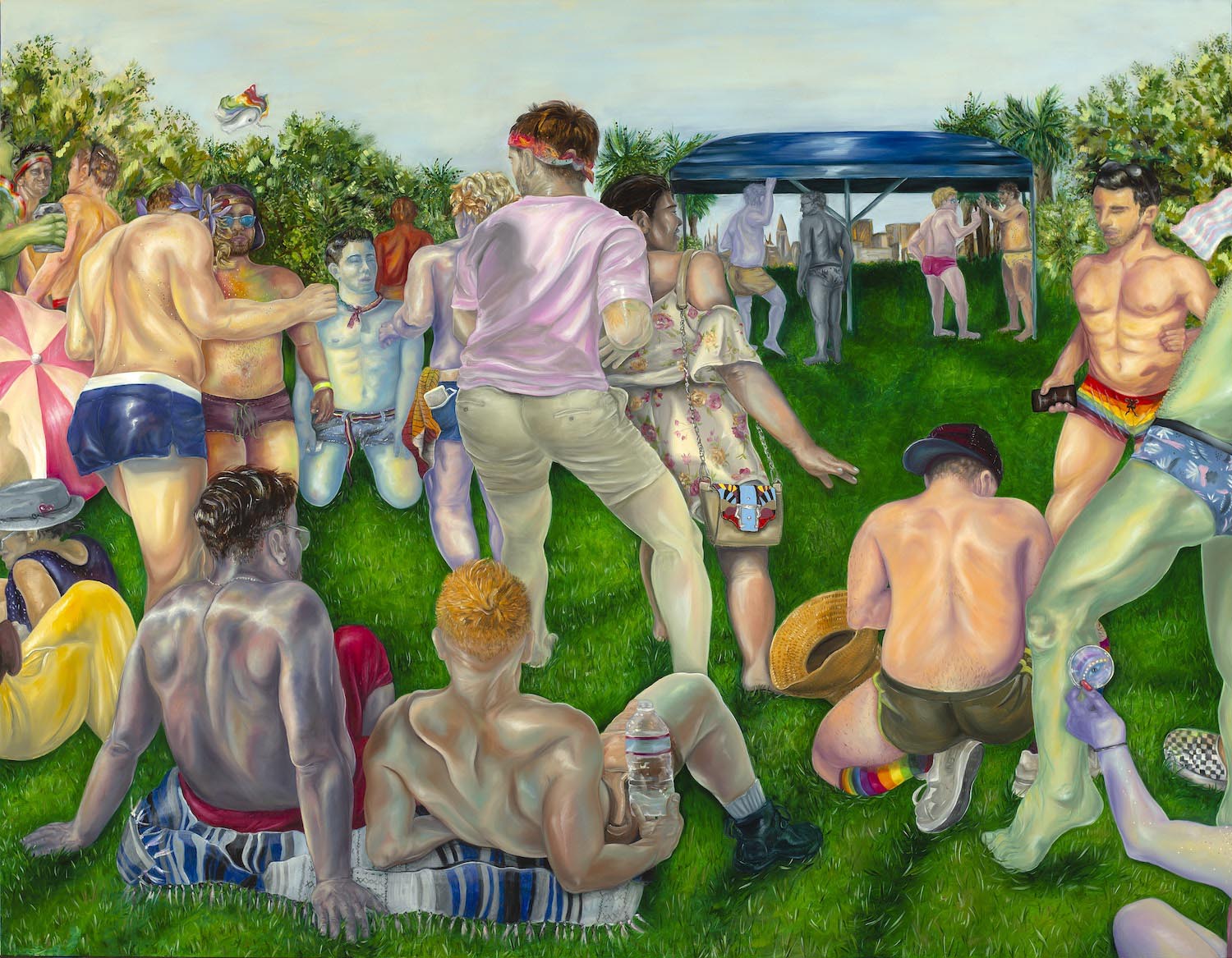
Courtesy of the Artist and OCHI. Photo by Deen Babakhyi

Courtesy of the Artist and OCHI. Photo by Deen Babakhyi
Learn more about the artist by visiting the following links:
























